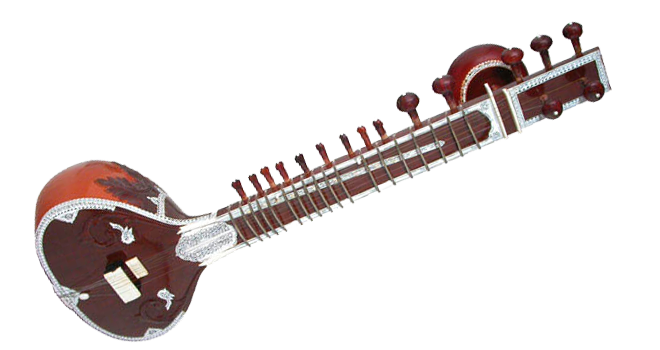Indian classical music is a very famous genre of music in India. It is the source of Indian music and practiced worldwide. It is said that it is very difficult to create or practice any music if you haven‘t learned Indian classical music, hence its termed as the mother tongue of Indian music.
One of the most commonly used musical instruments in Indian classical music is “Sitarâ€. It is perhaps the most well known of the Indian musical instruments.
Sitar is derived from another Indian musical instrument called “Veena†and was modified by a Mughal court musician as per the tastes of his mughal patrons and named after a Persian instrument called “Setarâ€. It is a long necked instrument with an interesting construction. Sitar is usually 17 strings. The large resonance box is made of dried pumpkins, neck, cover and a possible second smaller resonance box are mostly made of Turn wood and teak wood. Metal steel strings run across two bridges made of bone. The frets are movable by cords that are tied to the neck and also made of steel.

The music of sitar has charmed the audiences for thousands of years. Sitar music has long been favored by the biggest performers worldwide including Ravi Shankar, the Beatles, the Rolling Stones and even Metallica. Mastering the sitar represents a worthwhile challenge to even veterans guitarists.
Today the music of sitar is experiencing a worldwide wave of popularity and respect, and in variety of music genres. It is also considered the signature instrument in Indian classical and middle east regions.
Sitar produces complex harmonic resonance. It holds unique sonic beauty. The sounds produced by sitars can enrich any musical composition. If a performer is willing to practice and perform sitar music, they will be rewarded with a true musical gift.
Sitar comes in various styles.
The Ravi Shankar style
The first type of sitar is the “Ravi Shankar†style. These are equipped with a bass melody strings. This also boasts a second pumpkin that is attached near the top of its neck. The Ravi Shankar sitar is constructed with two extra bass strings, hence they produce a deep, bass-filled sound. They are also usually decorated with a good deal of extra carving and pen work.
The Vilayat Khan style
The “Vilayat Khan†style sitars are slightly smaller than the “Ravi Shankar†style. They typically features just one gourd and also equipped with fewer sympathetic strings without bass strings, however they are constructed with an additional rhythmic accompaniment string known as “Chickaree†which enables to produce a fuller and more chordal sound quality.
Bass sitar
Besides two main types of sitars there‘s another option for music lovers. The “Surbahar†also known as “Bass†sitar. It is a larger type of sitar that employs a very thick strings and much wider neck. It sports a broader fret board. Bass sitar offer a deeper tonal quality and is considered much more difficult to play.
